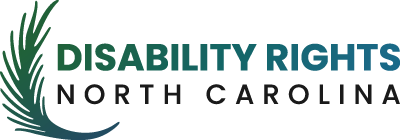TBI Program, Study, or Pilot
Type: Study 1
Agency Providing the Funding: Utah Department of Health and Human Services, Division of Juvenile Justice Services
Year Provided/Duration: Information Unavailable
Funding Given To: Information Unavailable
Population (Juvenile Justice, Criminal Justice, Parole, Probation, Jail, Prison, etc.,)
System Group
Juvenile Justice
Location
Utah’s Correctional Facilities
Purpose/Goal
The first goal is to determine a prevalence rate for TBI for youth in Utah’s secure care settings. The second is to evaluate the need to create or adjust facility treatment services and daily programming for TBI youth in the state’s secure correctional facilities to better serve their needs. (Goodall, Chamberlain, McDonnell, & Joplin, 2013)
Screening Tool Used
What tool was used?
Traumatic Brain Injury Questionnaire (TBIQ)
When is screening done?
Information Unavailable
What happens after screening?
When a youth is identified with TBI, staff collaborates and coordinates with the Department of Human Services and the Division of Services for People with Disabilities to evaluate the individual treatment needs of the youth and provide the necessary services required. These services can include, but are not limited to, medical care, physical therapy, occupational therapy, speech therapy, special education services, and mental health therapy. (Goodall, Chamberlain, McDonnell, & Joplin, 2013)
Who Conducted Screening?
Graduate students from Utah Division of Juvenile Justice Services
Data Collection
Tracking
Information on the method of tracking unavailable.
Findings
Information Unavailable
Community Resources
Information and Referrals
Case managers who work with a juvenile while she/he is in the correction center follows the youth into the community and has at least monthly face to face contact with the youth until the he/she is released from the juvenile justice system. (Goodall, Chamberlain, McDonnell, & Joplin, 2013)
When a youth is identified with TBI, staff collaborates and coordinates with the Department of Human Services and the Division of Services for People with Disabilities to evaluate the individual treatment needs of the youth and provide the necessary services required. These services can include, but are not limited to, medical care, physical therapy, occupational therapy, speech therapy, special education services, and mental health therapy. (Goodall, Chamberlain, McDonnell, & Joplin, 2013)
Trainings
Utah developed a “train the trainer” model series on TBI for its Juvenile Justice System. The training has modules for beginning front line staff, for advanced counselors, and for those who manage medication. (Goodall, Chamberlain, McDonnell, & Joplin, 2013)
Developed by Utah Brain Injury Council, the Center for Persons with Disabilities at Utah State University (USU), and the JJS training team, there is approximately 5-6hours of training provided during the series. (Goodall, Chamberlain, McDonnell, & Joplin, 2013)
Agency Contact Information
Name
Brain Injury Alliance of Utah
candace@biau.org
Website
Phone Number
Sustainability
Through the continuity of a case manager, this has helped with the continuation and sustainability of the pilot.
(Goodall, Chamberlain, McDonnell, & Joplin, 2013)
Advisory Board
Information Unavailable.
How was this information acquired?
Information was acquired through online published reports.
References: For more information on this states work, please see references
Goodall, P., Chamberlain, K., McDonnell, A., & Joplin, K. (2013). Virginia collaborative policy summit on brain injury and juvenile justice: Proceedings report. Health Resources and Services Administration.
Notes: Additional mentions from state leads/representatives
The primary outcome achieved thus far is that facility staff is becoming more aware of TBI as a treatment issue. To date, the project’s most important accomplishment is its current effort to train graduate students to use the Minnesota Intake Screening Instrument, the Traumatic Brain Injury Questionnaire (TBIQ)
